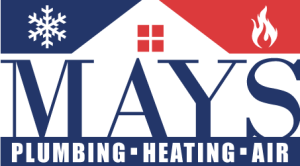Pipe Dreams Realized: 5 Secrets to Understanding and Managing Your Home’s Plumbing System
It is not often that you hear phrases like ‘plumbing enthusiast’ or ‘plumbing hobbyist,’ and the reason behind this is no mystery. The idea of dealing with pipes, faucets, toilets, and, most especially, any potential mess that could result from mishandling these things is not particularly appealing to most people. However, understanding and effectively managing your home’s plumbing can mean the difference between a small issue and an all-out catastrophe that can cost you thousands of dollars.
And so, this article aims to turn your pipe dreams into real understanding through sharing five secrets to comprehending and managing your home’s plumbing system effectively. Even better, we will do this without getting you wet or dirty. Let’s take a whirl.
1. Knowing the Basics
Knowledge is power, and this quote remains true even in navigating through the world of plumbing. One of the first steps towards understanding and managing your plumbing system is getting down to the basics – knowing how it works and recognizing the key components.
The Water Supply System
Primarily, your plumbing system consists of two main subsystems: the water supply system and the drainage system. The water supply system, fed by your utility company or sometimes by a well, sends fresh water to your home under great pressure. This pressure allows the water to travel to wherever it is needed in the home – the bathrooms, kitchen, outdoor faucets, laundry area, and so on.
The Drainage System
Conversely, the drainage system, also known as the dwv (drain-waste-vent), puts gravity to use. All pipes in the drainage system are angled downwards to facilitate the movement of waste and used water out of your home. Vents, through which gases are released outdoors, are attached to drain pipes. Traps, shaped like U and filled with water, prevent sewer gas from entering the home through drain pipes as well.
2. Regular Maintenance is Key
After understanding the basics of your home’s plumbing system, the next critical step is regular maintenance. While one-time big-time repiping or major repairs can solve problems, they are often more expensive and inconvenient compared to a consistent upkeep schedule.
Inspections
As the saying goes, ‘An ounce of prevention is worth a pound of cure.’ One effective means of prevention is a thorough inspection of your plumbing system. Structural integrity, leakage, and corrosion are just a few things you need to check to ensure everything is functioning as it should.
Cleaning
Do not underestimate the power of cleaning. Ensure your faucets and showerheads are free from mineral build-ups. Regularly cleaning your washing machine filter and dishwasher can also prevent debris from clogging your pipes. While you’re at it, don’t forget to drain a few gallons from your water heater tank quarterly to get rid of any sediment that could cause corrosion and reduce heating efficiency.
3. Understanding and Practicing Proper Use
Knowing how your plumbing system works and maintaining it regularly can only do so much if the system is not used properly. Oftentimes, your plumbing system’s problems do not stem from the system itself but from the users.
The Right and Wrong Things to Flush
Toilets are not garbage cans, and drains are not designed to handle everything that can fit in them. Understand what can and can’t be flushed or put in the disposal. Items such as wipes, cotton balls, tissues, and fats/oils should never go into your plumbing system. To keep things simple, only human waste and toilet paper should be flushed.
4. Implementing Water Conservation
Conserving water not only helps the environment but can also extend the life of your plumbing system and save you money on utility bills. Implementing water conservation techniques around your home is a win-win situation for you and Mother Earth.
High-Efficiency Fixtures
One of the ways to conserve water is by installing high-efficiency fixtures. These include low-flow showerheads and dual flush toilets. They are designed to use less water without sacrificing functionality.
5. Don’t Be Afraid to Call the Professionals
Lastly, don’t be afraid to ask for help. While DIY can save you money and there are plenty of easy fixes, some problems require professional skills. If you notice issues like low water pressure, recurrent clogs, and unusual noises from your pipes, it’s time to call in the professionals.
In conclusion, realizing your pipe dreams does not entail actual dreaming or wishing on a star. It involves knowing the basics of how your plumbing system works, implementing regular maintenance, understanding and practicing proper use, conserving water, and not being hesitant to call in the professionals when necessary. With these five secrets, you are well on your way to being your home’s plumbing master. Remember – the pipe is but the start of the journey, not the destination.




